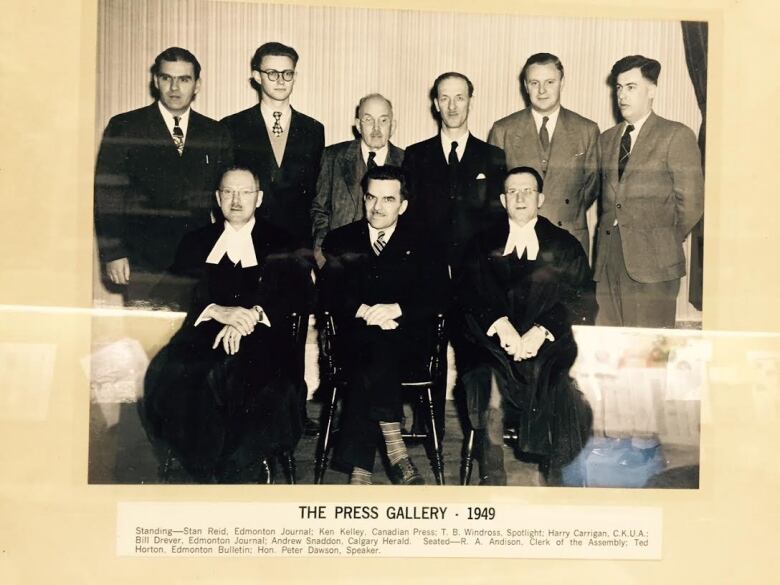Public relations posing as real news becoming more common in Alberta
It's getting more difficult to distinguish between news and public relations

Since the U.S. election, attention has been cast on so-called "fake" news where false stories posing as legitimate information appear onFacebookandTwitter feeds.
Adding to the confusion for readers is thegrowing phenomena of information appearing on websites run by governments, companies and agencies.
"Basically it's another form of public relations," said Christopher Waddell, a journalism professor at Carleton University in Ottawa.
"They feel they're able to deliver whatever message they want to deliver better by going directly to the public,"Waddell said. The media is left out as the traditional "gatekeeper" of information.
Governments creatingtheir own storiesis not new, butthe practicehas increased dramatically as consumers rely more on social media and mobile devices for news, and less on so-called legacy media outlets such as newspapers, radio and television stations.
In September, the City of Lloydminster launched its own news service called the "Lloydminster Record."
According to its website, the Record was launched to "provide clarity, balance and perspective to news coverage."
The city posted audio of interviews with officials on Soundcloud, and countered news coverage about the city's manager'stravel expenses by publishinglarge volumes of financial documents.
Todd Corrigall, director of strategies and partnerships for the City of Lloydminster, said they haven't posted any new stories on the site since it launched, but they will if they think it's necessary.
"If there's an opportunity for us to provide that information to residents to give them a full and complete picture, that is a tool that is available to us," he said.

Lloydminsterisn't the only organization creatingits own news stories.
The Alberta Energy Regulator (AER) isfunded entirely by industry andis responsible for regulating Alberta's oil and gas industry.
In June, the AER launched a new site called reSource. The site, featured prominently on the regulator'slanding page, containsnumerous articles about the work of the AER, and features written by "contributors."
In an email, AER spokeswoman Carrie Rosa said the agency has 28 full-time communications staff who handle internal business, media requests and contribute to thereSource site.
The site has a page featuring pictures and biographies of contributors who are AER communications staff.
Rosa said reSource replaced a blog, a quarterly newsletter and print copies of the annual report.
"The AER conducts annual public opinion research and Albertans have told us they want more information in plain language," she said. "The information on reSource does not replace traditional news sources, but supports it."
NHL.com won't touch some subjects
Waddell, who has written extensively on media and politics, said professional sports teams and organizations figured out the formula for getting information straight to fans a long time ago.
NHL.com, for example, sends its own reporters to cover games and generate statistics, but there are subjectsleague reporters likely won't touch.
"You can be pretty sure NHL.com is not going to be doing a big series about painkillers and hockey players or concussions and hockey players," Waddell said.
"What the corporate world and communications have been able to do, assisted by the internet, is to replicate the physical appearance and nature of news, hoping that the audience is not discerning enough to recognize the difference between public relations and promotional material, and what's actually news."
The Alberta government has several communication branches, ranging from 178 public servants employed as non-partisan department staff members, to political press secretaries, issues managers, and the 43 members of the Public Affairs Bureau.
The province sends out regular press releases and media advisories through its Public Agency News,and has its own in-house video production unit and YouTube channel.

Waddell says the ability to craft corporate or government news has become much easier with the emergence of the internet, and the decline in the number ofworking journalists.
According to a submission presented recently by the Canadian Media Guild to Canadian Heritage Minister Melanie Joly, 16,500 journalism jobs have been lost since 2008.
Diminishing numbers in the Alberta legislature press gallery provide a good example of this drastic decline.
The gallery ismarking its 100th anniversary in 2016.
It once had television, radio and newspaper reporters from across Alberta. Today there are fewer than 10 Edmonton-based journalists who cover the legislature on a regular basis.
With the volume of information now available, Waddell says readers are now forced tofind out if the information they're reading comesfrom a reliable source.
"It really forces the viewer, listener, reader to be much more of their own editor in determining which sources they trust and what people they trust."












_(720p).jpg)


 OFFICIAL HD MUSIC VIDEO.jpg)
.jpg)



























































































